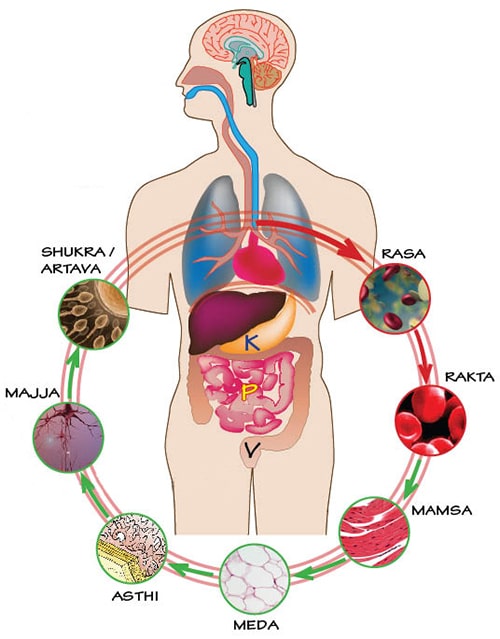
According to Ayurveda dhatu are the building blocks of the human body.
Dhatu is thought to be the foundation of development and survival because it is derived from the root word DAA, which meaning “foundation” or “that which bears.”. in terms of the human body dhatu is described as functional entities or tissues which nourish the body and are supported.
Modern medicine describes the body as a network of interconnected systems. They each affect one another the Nervous System affects the skeletal system which affects the circulatory system and so on.
How the physiology of the human body is perceived in Ayurveda is completely different from that of modern medicine. Rather than having unique systems, the body is made up of a sequence of seven channels known as “srotas.” These srotas or channels flow through every part of the body to perform the necessary functions.
The seven dhatus are included in seven srotas, each of which is progressive in nature, with each higher unit carrying a portion of the previous one.
According to Ayurveda, there are 7 basic dhatus in the human body. They are Rasa, rakta, mamsa, medas, asthi, majja, and shukra are the Sanskrit terms for these concepts. In English, they are represented as Plasma, blood, muscle, fat, bone, marrow/nerve, and reproductive tissue.
The human body is made up of several structures. They are, however, far more than their one-dimensional meanings, as are most concepts in Vedic literature. They’re crucial to understanding the body’s tissue relations. Pathology, or what goes wrong in the body, requires knowledge of the seven dhatus. When a dosha enters a dhatu, a thorough understanding of the dhatu aids the practitioner in predicting symptoms and selecting the best treatment options.
Some dhatus create supplementary tissues, often known as Upadhatus. Upadhatus are modifications that result from dhatu metabolism. Upadhatu also nourishes the body. For example, one of the two upadhatus created by rasa dhatu during the metabolism of Rasa is stanya or breast milk.
Seven dhatu are correlated to the modern terms as Rasa dhatu can be correlated to the lymphatic, capillary secretions, and digestive juices. Raktha dhatu to to hemopoietic or circulatory system, Mamsa dhatu to Muscular System, Meda dhatus to li[pids or fat tissue, asthi to skeletal system, majja to the nervous system, including bone marrow brain spinal cord and nerve Apparatus and Shukra dhatu to the reproductive system including hormones.
seven dhatus in ayurveda
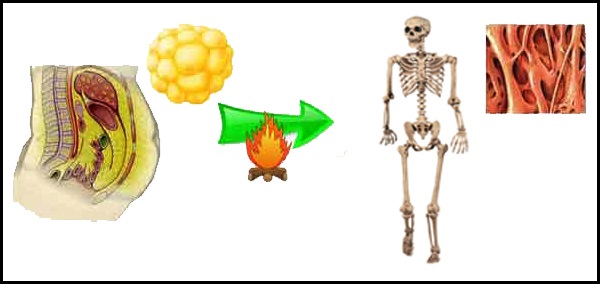
Asthi Dhatu
Asthi is the Sanskrit word for bone. The asthi dhatu offers the body a strong foundation. Posaka (unstable) medas dhatu enters the purisha dhara kala and is digested by the asthiagni in the physical body, resulting in the formation of asthi dhatu.. Teeth are generated during this process, in addition to the bones of the body, and are thus the upadhatu (secondary tissue) of the formation of asthi dhatu. Hair and nails are waste products (malas) of this metabolic process.
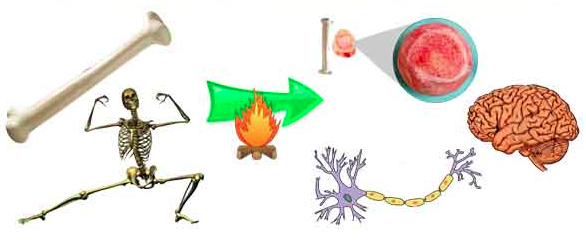
Majja Dhatu
Majja is a word that signifies marrow, as in bone marrow (asthi-majja). However, the phrase has come to be associated with the nervous system, which, like bone marrow, is encased within the bone. The brain is protected by the skull. The spinal cord’s casing is made up of vertebrae. The core nervous system is made up of the brain and spinal cord, but the majja dhatu is linked to the complete neurological system. In Ayurveda, the nervous system and bone marrow are viewed as homologous structures.
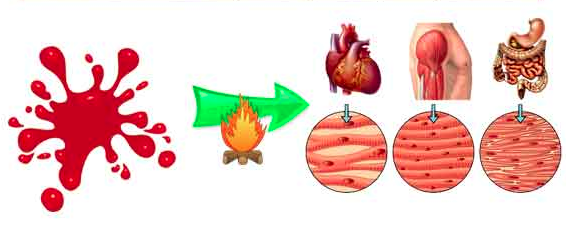
Mamsa dhatu
The term “mamsa dhatu” indicates “flesh” or “meat,” but in Ayurveda, it refers to the body’s muscles. Mamsa dhatu refers to the muscles directly and indirectly in the physical body, as well as the ligaments and skin, which are upadhatus generated when the unstable form of rakta dhatu (posaka rakta) is transformed to mamsa dhatu.
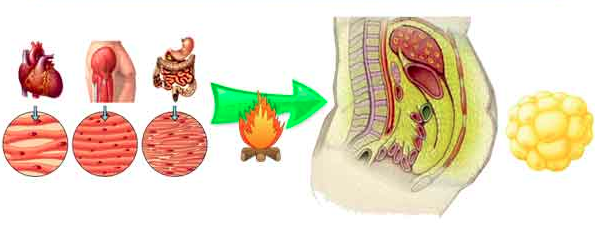
Medas dhatu
Medas dhatu refers to the body’s fatty tissues. While the phrase means “fat,” it refers to the concentrated fluids in the body. In the physical body, the medas dhatu is associated with sebum (skin oil) and the greater and smaller omentums, which are its upadhatu, as well as body fat. Excess belly fat is primarily stored in these tissues.
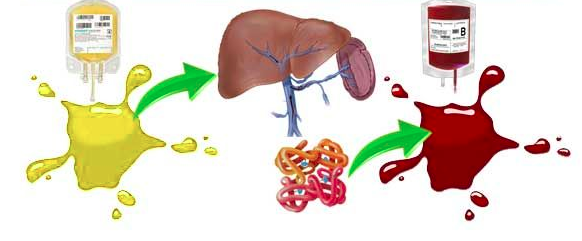
Rakta dhatu
Rakta dhatu refers to the fundamental fire of the body. Rakta is a Sanskrit term that means “colored” and “reddened.” Depending on the context, it can also indicate impassioned. Each of these meanings has significant implications in terms of health and healing. Rakta refers to blood, particularly red blood cells, as well as tendons and bile in the physical body.
Rakta dhatu consists of more than just blood. It is the bearer of the fire that energises both the body and the mind. As a result, when the rakta dhatu is in good health, a person feels energized and has a healthy passion for life. When the rakta dhatu is excessive, the body heats up, the tissues in the body get inflamed, and the mind becomes more concentrated and focused. The heat in the body drops when the rakta dhatu is insufficient, the tissues become cold and inflexible, and the mind loses its clarity and focus
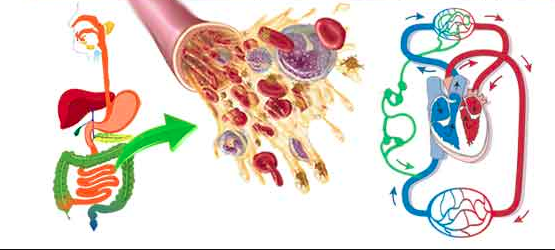
Rasa dhatu
Rasa dhatu refers to the body’s primary waters. Rasa is a Sanskrit word that means sap, juice, or liquid. Rasa refers to the plasma, or non-cellular part of the blood, as well as lymph and interstitial fluids in the physical body. Rasa dhatu is related to breast milk and menstrual fluid indirectly because they are both watery secretions.
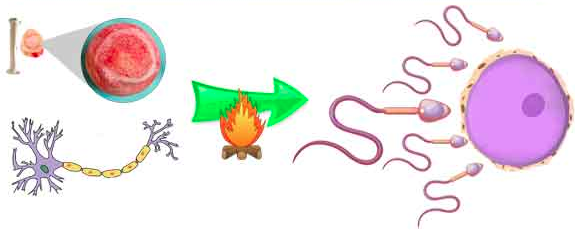
Shukra Dhatu
Shukra is a Sanskrit word that means “bright, pure, and radiant.” It can also refer to something’s “essence.” Both the male sperm and the female egg are referred to as dhatus in Ayurveda because they carry the essence of all of the body’s other dhatus (tissues). Shukra is the seventh and final dhatu in the cycle of dhatus formation. A person with healthy shukra exudes confidence, with eyes and skin that appear to radiate light. This light can be perceived by a sensitive person. Others may notice it as luster, or they may simply sense the possessor’s strength and confidence.

Leave a Reply